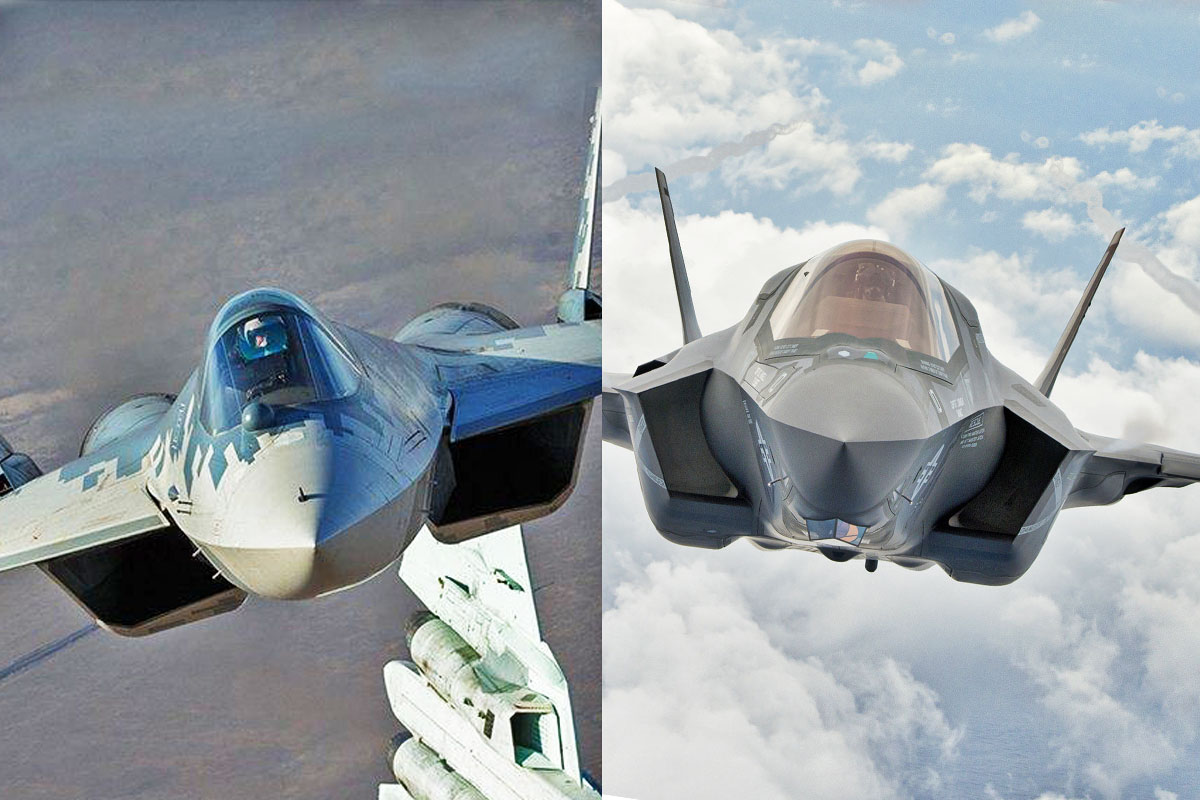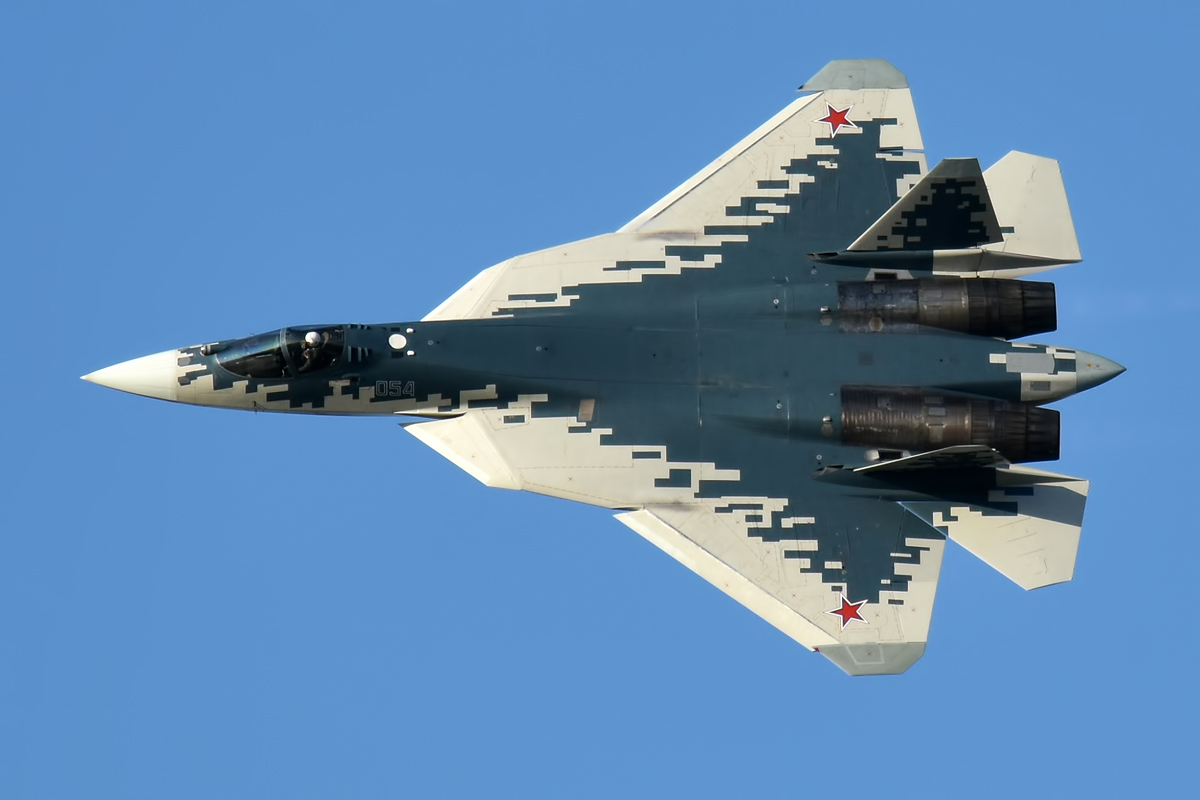As the Pentagon, for now, has stalled accepting any more F-35 Lighting II stealth fighters following the discovery of a Chinese-made part in its engine, debates about the plane’s effectiveness against its equivalent Russia’s Su-57 have again sprung up.
US M777s Could Come To A ‘Grinding Halt’ In Ukraine; Kiev Is Running Out Of Patience & Pentagon Is ‘Struggling’ To Help
France To Procure Electromagnetic Weapons, UAVs, DEWs ‘Off-The-Shelf’ As It Aims To Become The Strongest Power In Europe
While US and Russian experts vouch for their warplanes, experts have extolled the virtues of the Su-57.
Reports stated that an alloy in the F-35’s engine’s ‘turbomachine,’ manufactured by Honeywell, came from China. Defense authorities have clarified that the part does not transmit information, while alternatives were being arranged as acceptance of fresh deliveries of the jet has been paused.

Su-57 Vs. F-35 – Who Wins?
It is indeed true that the Su-57 is a competent aircraft with shallow observability features, powerful engines, greater payload, and even crazier maneuverability. The defining feature of the ‘fused wing and body’ Generation 5 jet is the radar array spread all around the aircraft, allowing it to practically ‘look’ in all directions possible.
In November 2018, Chief Designer and Director of the Sukhoi Design Bureau Mikhail Strelets claimed that the Su-57 could fully perform air-to-air and air-to-ground tasks, unlike the F-22 and F-35, which were designed for a particular role.
The F-22 was mainly found incapable of carrying larger air-to-ground munitions in its internal bays after the Americans realized the constraints imposed by a purely air-superiority/air dominance fighter.
Strelets then pointed to the coincidence of the sum of 22 and 35 is 57, maintaining that they “specifically didn’t choose” the numerical designation for their jet.
Then in January 2021, renowned test pilot Magomed Tolboyev claimed the Su-57 could easily beat the F-35 in a ‘dogfight,’ owing to its extreme ‘supermanoeuvrability,’ of which the F-35 is “simply incapable.”
But Tolboyev admitted that the F-35 possesses the “electronic might.” He said electronic warfare could be disrupted by factors like solar flares and how the era of ‘dogfights’ is a passé.
Tolboyev might have been referring to the massive computing, sensor fusion, sensor data processing, and data linking capabilities of the F-35, besides the full aspect of ‘pure stealth.’
In a previous interaction with EurAsian Times, Billie Flynn, an F-35 test pilot, described it as a “data-gathering spaceship with 8.6 million lines of software code.”
American techno-military doctrine, in general, and Flynn in particular, consider this the biggest game-changer that allows the individual pilot to make the most informed tactical decision, primarily while operating with other allied F-35s.

“It is the capability to mesh all the data and sensors to give the pilot a simplified, prioritized display of knowledge of the battlespace. No data or information but knowledge of what is out there in the battlespace,” Flynn said.
The emphasis on the term implies a distinct, discernible picture of the battlefield they do not have to sit and analyze.
Its complete stealth, combined with a powerful radar, sensors, and deadly EW capabilities, also would allow it to break the ‘attrition’ cat-and-mouse game. “The F-35 can detect the enemy first, shoot first, turn around and speed away,” Flynn explains.
Flynn adds that the Ukraine war was precisely designed for the environment for which the F-35 was designed.
According to an IAF aviation expert who did not wish to be quoted, the Su-57 has six radars spread all around its airframe, in place of the Distributed Aperture System (DAS) sported by the F-35.
This system was pioneered on the Su-35 Flanker E Gen. 4++ fighters that entered service in 2014, where the jet’s nose carried the Irbis-E electronic-cum-mechanical scanning radar.

But the two N036B-1-0-1 Active Electronically Scanned Array (AESA) L-band radar sensors in the wings’ leading edges enhance the Su-35’s long-range detection capability.
Adopted onto the Su-57, the six radars distributed across its airframe allow it to track 60 targets simultaneously from its rear and sides and operate in different wavelengths to detect stealth aircraft.
It also carries the K-77M 200-kilometer range Beyond Visual Range (BVR) missile, one of the few in the world to carry an AESA seeker.
Signals its transceivers receive are digitally processed, allowing the K-77M to immediately respond to sharp and fast maneuvering targets and maintain a high ‘hit probability.’ Whichever plane wins, a mere tactical victory in the air will mean nothing without a complete political and strategic success.
- The author can be reached at satamp@gmail.com
- Views personal of the author
- Follow EurAsian Times on Google News




